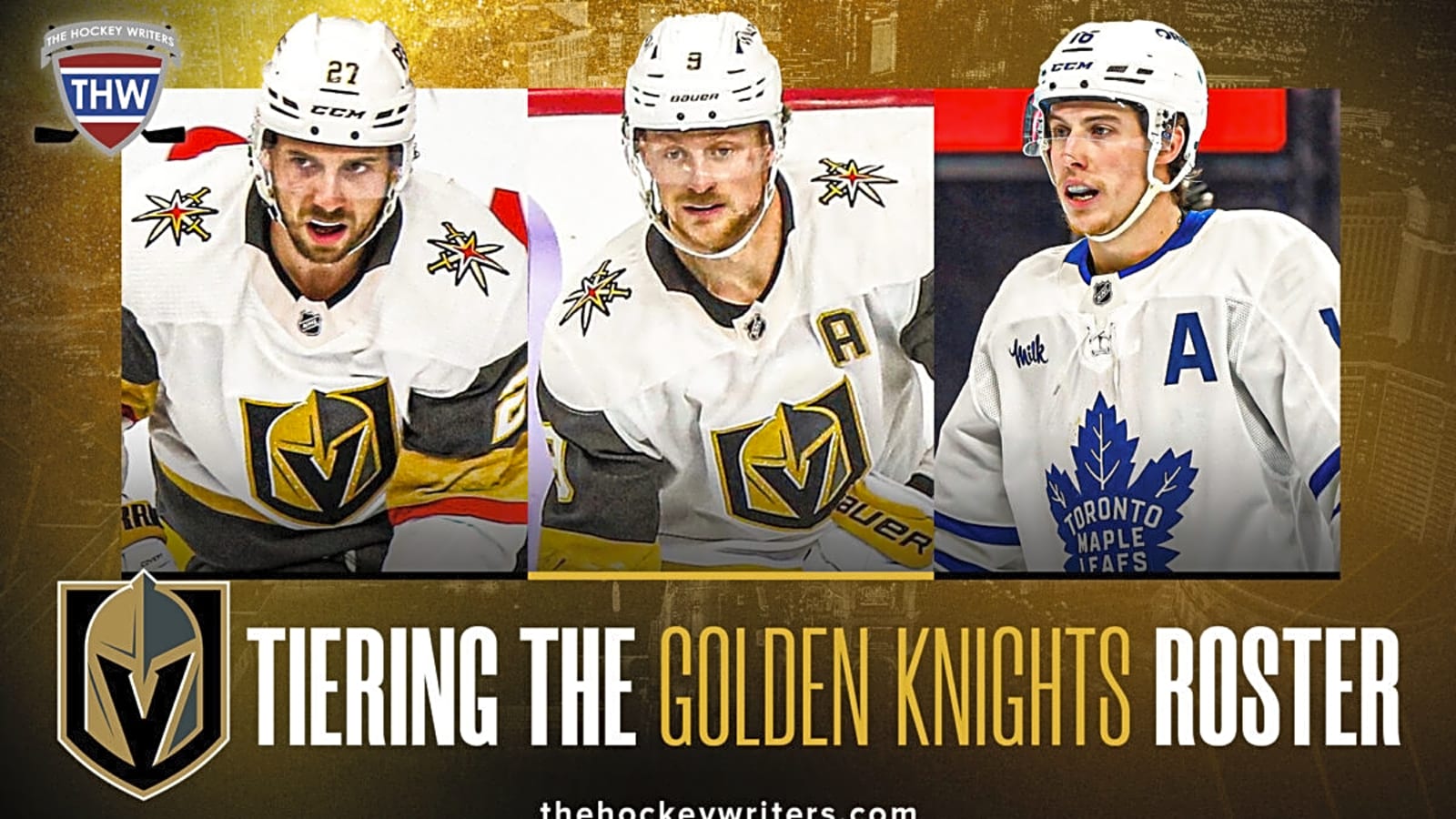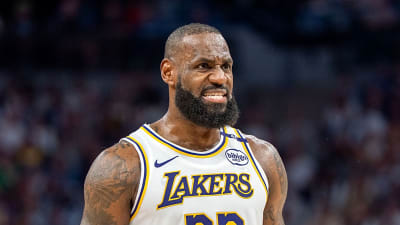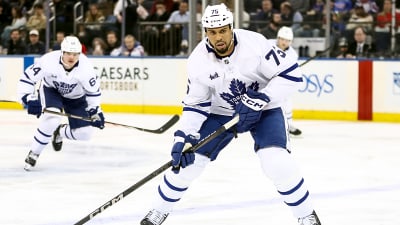
It’s getting to that point in the desert southwest where when you go outside for more than 20 minutes, and you go to check your phone, it reads that the temperature is too hot, and it needs to cool down. Oftentimes, that means it’s summertime, which also means the NHL offseason.
Aside from the Vancouver Canucks moving on from 24-year-old goaltender Arturs Silovs, who was dealt to the Pittsburgh Penguins on July 13, the offseason is in full swing. For better or worse, there’s not a ton happening.
It’s expected, though, especially as teams enter into the latter portions of the offseason. For the Vegas Golden Knights, they highlight one of, if not the biggest, move of the offseason by making a sign-and-trade work for Mitch Marner.
With most teams’ rosters all set in stone for opening night in October, here is where the Golden Knights stand: a tier-by-tier breakdown of the roster.
Tier One: Elite Superstars
- Jack Eichel, Mitch Marner, Mark Stone, and Shea Theodore
Tier one is made up of the best—simple as that. This list isn’t long, and it shouldn’t be; few teams boast elite star power across every inch of the ice. But for the Golden Knights, their top tier runs deeper than most, giving them a clear edge in high-end talent.
Starting with Eichel, he’s been the heart and soul of the Golden Knights’ offense since his arrival in the fall of 2021. His 94 points last season were a career best, and it appears the 28-year-old’s best seasons are ahead of him, especially thanks to the arrival of his new teammate.
Marner, the newest superstar on the Golden Knights, easily highlighted the entire NHL offseason. After months (even years) of trying to find a way to acquire him, general manager Kelly McCrimmon got the job done, signing him to an eight-year, $12 million deal. The Markham, Ontario, native had 102 points last season, which was fifth-best in the NHL.
Both Eichel and Marner were shipped to Vegas in blockbuster trades, and the same can be said for Stone, who was acquired in 2019 from the Ottawa Senators. As one of the most consistent producers on the team and the only captain in Golden Knights history, he has made a significant impact. While age has seemingly been catching up to him, he has still been a head and toe above his peers.
Theodore stands as the pinnacle of the Golden Knights’ blue line. Had Alex Pietrangelo not been placed on long-term injured reserve (LTIR) for the 2025-26 season—likely signaling the end of his NHL career—he would’ve shared top-tier status. But with Pietrangelo sidelined, the spotlight now shifts squarely onto Theodore, the dynamic puck-moving defenseman tasked with anchoring the back end as the team’s new No. 1.
Tier Two: Key Contributors
- Ivan Barbashev, Pavel Dorofeyev, Tomáš Hertl, Noah Hanifin, Adin Hill, and William Karlsson.
Tier two consists of everyday contributors who are on the scoresheet without surprise, but aren’t in the category of a player like Marner. Take, for example, Dorofeyev, who led the team in goals during the 2024-25 season with 35, but still has more to prove. The Russian winger should be one of the most fascinating storylines to follow, as he’ll try to replicate his campaign from one year ago.
Hertl and Hanifin were both acquired at the 2024 Trade Deadline with the expectation of fueling another deep playoff run. Instead, the Golden Knights bowed out in Round 1, falling to the Dallas Stars in seven games. During that series, neither player lived up to the lofty expectations, leaving more to prove heading into 2024-25.
While Hertl isn’t known for lighting up the scoresheet, he remains one of the league’s most dependable second-line centers, slotting in perfectly behind Eichel. The same goes for Hanifin on the back end; he doesn’t need to drive offense to be effective, he just needs to play steady, reliable minutes, something he’s more than capable of.
Barbashev and Karlsson won’t wow you with highlight-reel plays, but they do the dirty work that wins games. That’s been Vegas’s formula from the start: everyone chipping in. For Karlsson, it’s a puck battle; for Barbashev, it’s a net-front screen or a tip.
Hill, on the other hand, took a big leap forward this past season, earning 32 wins in 50 games played. We’ll see if that can continue this season, but if Vegas wants any chance at their second Stanley Cup, they’ll need the 29-year-old to be on point.
Tier Three: Supporting Cast
- Brett Howden, Keegan Kolesar, Kaedan Korczak, Jérémy Lauzon, Brayden McNabb, Brandon Saad, Akira Schmid, Colton Sissons, Reilly Smith, and Zach Whitecloud.
Tier three, the supporting cast, has several interesting arguments to be made for several different players. Sissons and Lauzon were just traded to Vegas as part of the Nicolas Hague deal. Sissons can play on the penalty kill and is great at faceoffs, while Lauzon will provide presence on the blue line with his 6-foot-2 frame.
Saad and Reilly could’ve been considered in tier two, but given how their roles were developed, they aren’t going to be playing 20-plus minutes. Both of these players are on one-year deals this season and should help construct the bottom-six of the Golden Knights roster.

Korczak, who’s only 24 years old, recently signed a four-year deal to remain in Vegas, a gamble on McCrimmon’s end, but if we’ve learned anything, it’s that the Golden Knights are going to go big or go home. Along with Korczak, McNabb, and Whitecloud rounding out the blue line, and given their role likely in a bottom pairing, or somewhere in that ballpark, tier three makes the most sense.
Howden had a career year last season, recording 23 goals and 40 points, giving head coach Bruce Cassidy a reliable bottom-six forward to fall back on. Along with Kolesar, who has been with the Golden Knights since 2019, had 30 points in 82 games. Both provide a steady presence in the lineup, giving the team more than one line to rely on.
Lastly, we have Schmid, who is likely to be Hill’s backup in net for the season. The Golden Knights relied on Ilya Samsonov for this role for the 2024-25 season, but he elected to test free agency. The 25-year-old netminder will have lots to prove, but for now, being in the supporting cast is where he falls.
Tier Four: Depth & Fringe
- Dylan Coghlan, Jaycob Megna, Cole Reinhardt, and Cole Schwindt.
Tier four, made up of depth and fringe players, isn’t very extensive, and it’s easy to see why. With limited roster spots, the Golden Knights don’t rely heavily on depth, but injuries are inevitable for every team, making these players vital insurance when called upon.
Coghlan spent two seasons with the Golden Knights in 2020-22 and saw 88 games between both. He was then with the Carolina Hurricanes and Winnipeg Jets before finding his way back to Vegas. Last season with the Manitoba Moose, the Jets’ American Hockey League (AHL) affiliate, he had 28 points in 36 games.
It’s good to have depth, and that’s what Coghlan will more than likely provide. The same applies to Megna, who signed with the Golden Knights on a two-year deal. The 6-foot-6 defenseman stands tall on the ice and played eight games with the Florida Panthers last season.
Reinhardt and Schwindt provide depth on the forward side as injuries impacted the Golden Knights during their 2025 Playoff run, having Dorofeyev, Stone, and others miss time. Schwindt played with Vegas last season, playing 42 games but only registering eight points.
Reinhardt, however, comes from splitting time in the AHL and NHL last season with the Ottawa Senators and Belleville Senators. He was drafted in the sixth round of the 2020 Draft by Ottawa.
These are depth pieces who might not see regular action, but they provide insurance at positions where injuries are more likely to occur, giving the Golden Knights a buffer when the grind of the season hits.
The Golden Knights appear largely set heading into the 2025-26 campaign. While they’ll begin the season without Pietrangelo, the addition of Marner up front injects elite playmaking into an already potent offense. Vegas looks poised to score in bunches, but the blue line, noticeably thinner than years past, could become a storyline as the season unfolds. The 2025-26 schedule is set to release on Wednesday, July 16.
More must-reads:
- NHL's 2025-26 opening night slate is a showcase opportunity for the league
- Sabres, Bowen Byram avoid arbitration with new two-year deal
- The 'Most recent cycle by MLB franchise' quiz
Breaking News
Trending News
Customize Your Newsletter
 +
+
Get the latest news and rumors, customized to your favorite sports and teams. Emailed daily. Always free!








